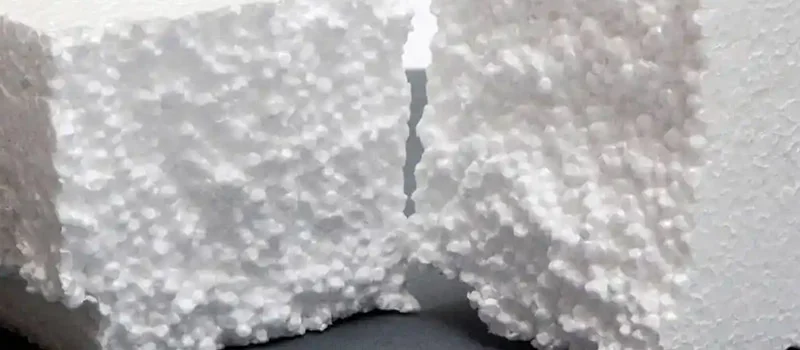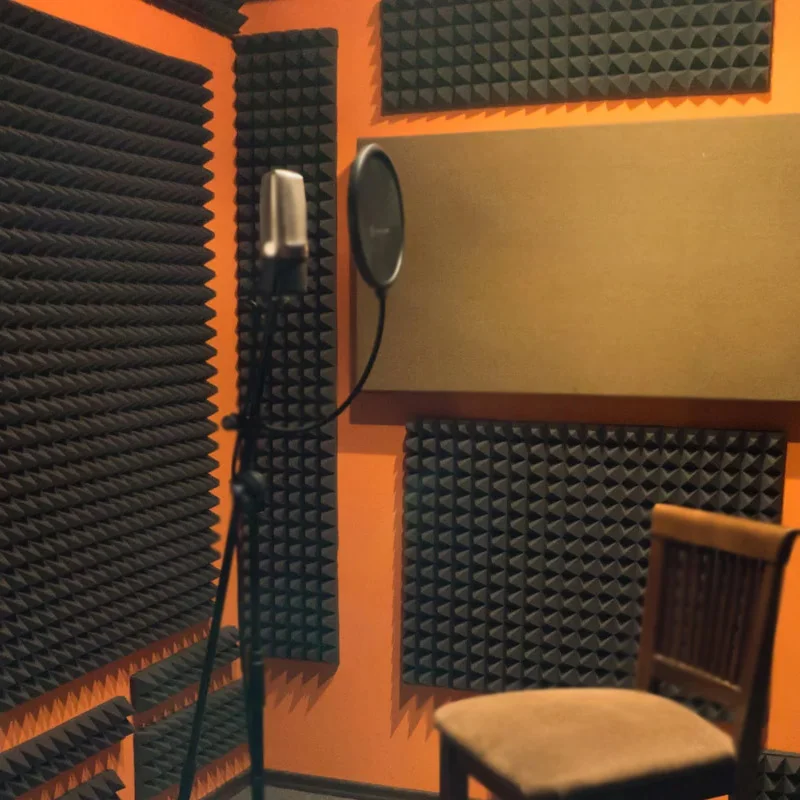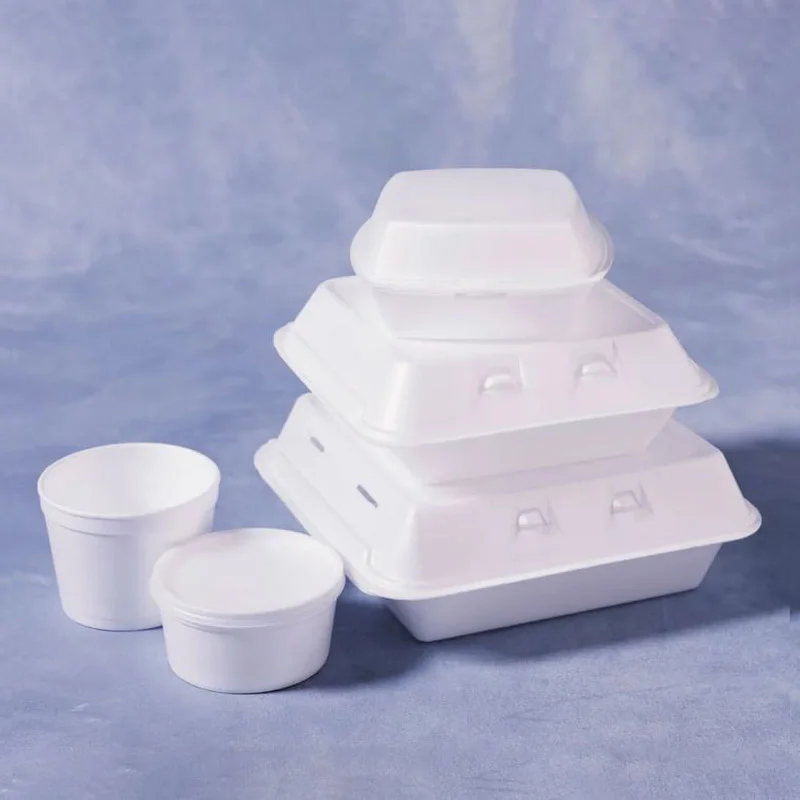What is Styrofoam Made of?

Here’s the chemical equation for the reaction:
C8H10 (ethylbenzene) -> C8H8 (styrene) + H2 (hydrogen gas)
Styrofoam, or expanded polystyrene (EPS), is primarily made from the elements carbon and hydrogen. These elements are present in the form of polystyrene, which is a polymer derived from petroleum.
Other elements may also be present in EPS depending on any additives used in the manufacturing process, such as flame retardants or stabilizers. However, the main components of EPS are carbon and hydrogen.
How Styrofoam is produced?
Preparation of Raw Materials:
The primary raw material for Styrofoam production is polystyrene resin, which is derived from petroleum. Other additives such as blowing agents, flame retardants, and stabilizers may also be included depending on the desired properties of the final product.
Pre-Expanding:
The polystyrene resin beads are first pre-expanded using steam. This process involves heating the beads in a steam-filled chamber, causing them to expand and partially fuse together. Pre-expansion increases the volume of the beads and makes them easier to mold in the next step. For environmental protection, The gas commonly added to EPS (expanded polystyrene) during the pre-foaming process is typically pentane.
Pentane is a hydrocarbon gas that serves as a blowing agent, meaning it generates the gas bubbles necessary for expanding the polystyrene beads. During the expansion process, the pentane gas expands rapidly due to the heat, creating the characteristic cellular structure of EPS foam. Once the foam has solidified, the pentane gas is trapped within the foam cells, contributing to its lightweight and insulating properties.
Molding:
The pre-expanded beads are then molded into the desired shape using molds or forms. This can be done using either steam molding or pressure molding techniques. Steam molding involves placing the beads into a mold and exposing them to steam, which causes further expansion and fusion, while pressure molding uses heat and pressure to achieve the same effect.
Final Expansion:
After molding, the formed EPS products undergo a final expansion process to achieve the desired density and shape. This is typically done in a steam chest or oven, where the molded products are exposed to heat and steam, causing them to expand further and fully fuse together.
Cooling and Cutting:
Once the final expansion is complete, the EPS products are allowed to cool and solidify. They are then cut to the required size and shape using hot wires or other cutting tools.
Finishing and Packaging:
After cutting, the EPS products may undergo additional finishing processes such as trimming or shaping to achieve the desired dimensions and appearance. Finally, the finished products are packaged and prepared for distribution and use in various applications such as packaging, insulation, and construction.
Throughout the production process, quality control measures are implemented to ensure that the EPS foam products meet the required specifications and standards for their intended use.
What are the standards for producing Styrofoam?
| Standard | Description |
|---|---|
| ASTM Standards | Developed by the American Society for Testing and Materials (ASTM) covering material properties, performance testing methods, and manufacturing processes. |
| ISO Standards | Published by the International Organization for Standardization (ISO) addressing quality management, environmental impact, and product specifications. |
| Food Contact Regulations | Regulations set by government agencies such as the U.S. Food and Drug Administration (FDA) and the European Food Safety Authority (EFSA) to ensure the safety of Styrofoam products intended for food contact. |
| Building Codes | Local building codes and regulations specify requirements for insulation materials, fire resistance, and structural performance in construction and building applications. |
| Environmental Regulations | Regulations related to environmental impact, including restrictions on certain additives, requirements for recycling or disposal, and guidelines for reducing environmental footprint. |
| Industry Guidelines | Guidelines and best practices published by industry associations and organizations for the use of Styrofoam in specific applications, such as packaging, insulation, or manufacturing. |
Why Choose Styrofoam?
Superior Insulation Properties
Styrofoam boasts exceptional insulation capabilities, making it an ideal choice for construction, packaging, and various other applications. Its closed-cell structure effectively traps air, providing excellent thermal resistance and energy efficiency.
Styrofoam insulation helps maintain consistent temperatures, whether you’re aiming to keep your home cozy during winter or cool during scorching summers.
Lightweight and Durable
One of the standout features of Styrofoam is its lightweight nature coupled with remarkable durability. Despite being lightweight, it exhibits impressive strength and resilience, making it suitable for packaging fragile items or constructing sturdy structures.
Whether you’re shipping delicate electronic gadgets or constructing architectural models, Styrofoam’s lightweight yet robust characteristics ensure your products remain well-protected throughout handling and transit.
Versatility Across Industries
From construction to crafting, Styrofoam finds applications across a wide spectrum of industries. Its versatility enables it to be molded into various shapes and sizes, catering to specific project requirements.
In construction, Styrofoam serves as an effective insulation material, reducing heat transfer and enhancing energy efficiency in buildings. Additionally, it finds use in crafting props, sculptures, and even flotation devices, showcasing its adaptability across different domains.
Cost-Effectiveness
In comparison to alternative materials, Styrofoam stands out for its cost-effectiveness. Its affordability makes it an attractive option for businesses and individuals alike, allowing them to achieve their objectives without breaking the bank.
Whether you’re a small business owner looking to optimize packaging costs or a homeowner seeking budget-friendly insulation solutions, Styrofoam offers a compelling value proposition without compromising on quality or performance.
Environmental Sustainability
Contrary to popular misconceptions, Styrofoam can be recycled and repurposed, contributing to environmental sustainability efforts. Many recycling facilities accept Styrofoam for processing, where it can be transformed into new products or utilized as a raw material in various industries.
Styrofoam Commonly Used Additives
Enhancing Properties: Unveiling the Functionality of Additives
In addition to styrene and blowing agents, Styrofoam incorporates various additives to tailor its properties for specific applications. These additives may include flame retardants, colorants, and stabilizers. Flame retardants play a crucial role in enhancing the fire resistance of Styrofoam, making it suitable for applications where safety is paramount. Colorants impart aesthetic appeal, while stabilizers ensure the material’s durability and longevity.
| Additive | Function | Specific Product Applications |
| Blowing Agents | Blowing agents are added to EPS during the manufacturing process to create the characteristic cellular structure of the foam. Common blowing agents include pentane and carbon dioxide. | 1. Packaging materials for fragile items 2. Insulation for buildings and refrigeration systems 3. Cushioning in furniture and automotive industries |
| Flame Retardants | Flame retardants are incorporated into EPS to improve its fire resistance and reduce its flammability. Examples of flame retardants used in EPS include brominated compounds and phosphorus-based additives. | 1. Building insulation and construction materials 2. Electrical and electronic equipment 3. Automotive parts and components |
| Stabilizers | Stabilizers are added to EPS to improve its thermal stability and resistance to degradation from heat and ultraviolet (UV) radiation. These additives help prolong the lifespan of EPS products. Common stabilizers include antioxidants and UV absorbers. | 1. Roofing materials and membranes 2. Geotechnical applications such as retaining walls 3. Marine flotation devices and buoyancy aids |
| Colorants | Colorants are added to EPS to provide pigmentation and enhance the appearance of the foam. These additives allow EPS products to be manufactured in various colors according to customer preferences or industry standards. | 1. Decorative and ornamental products 2. Packaging for retail products 3. Craft and hobby materials |
| Expanders | Expanders are used to control the expansion process of EPS during manufacturing, ensuring uniform cell structure and density. These additives help optimize the physical properties of EPS foam. | 1. Molded packaging inserts for delicate items 2. Structural insulated panels (SIPs) for construction 3. Lightweight fill material in road and landscape projects |
What are the applications of polystyrene foam?



Styrofoam, or expanded polystyrene (EPS), is used in various applications due to its lightweight, insulating, and shock-absorbing properties. Some common applications of Styrofoam include:
Styrofoam or expanded polystyrene (EPS) Packaging: Styrofoam is widely used as packaging material for fragile items during shipping and transportation. It provides cushioning and protection against impact, helping to prevent damage to goods.
Styrofoam or expanded polystyrene (EPS) Insulation: EPS foam boards are commonly used as insulation material in buildings and homes. They help to reduce heat transfer and improve energy efficiency by keeping indoor spaces cooler in the summer and warmer in the winter.
Styrofoam or expanded polystyrene (EPS) Food Service: Styrofoam cups, trays, and containers are commonly used in the food service industry for serving hot and cold beverages, as well as for packaging take-out meals and snacks.
Styrofoam or expanded polystyrene (EPS) Crafts and Hobbies: Styrofoam is often used in arts, crafts, and hobby projects due to its lightweight and easy-to-cut nature. It can be shaped, carved, and painted to create a variety of decorative items and sculptures.
Styrofoam or expanded polystyrene (EPS) Floral Arrangements: Styrofoam blocks and shapes are used as bases for floral arrangements and centerpieces. Flowers and foliage can be easily inserted into the foam to create custom designs for events and decorations.
Styrofoam or expanded polystyrene (EPS) Marine and Buoyancy: Styrofoam is used in marine applications such as flotation devices, buoys, and floating docks due to its buoyant properties and resistance to water absorption.
Styrofoam or expanded polystyrene (EPS) Model Making: Styrofoam sheets and blocks are popular materials for architectural models, dioramas, and scale replicas due to their ease of cutting and shaping.
Styrofoam or expanded polystyrene (EPS) Medical Packaging: EPS foam is used in the medical industry for packaging and transporting sensitive equipment, devices, and pharmaceuticals due to its protective properties.
Common specific applications of Styrofoam or expanded polystyrene (EPS)
| Styrofoam Product | Material Composition | Specific Applications |
| Styrofoam Balls | Expanded polystyrene (EPS) | 1. Arts and crafts projects such as holiday decorations and school projects. |
| 2. Floral arrangements and centerpieces. | ||
| 3. Packaging for fragile items in shipping. | ||
| 4. Model making for architectural, hobby, and educational purposes. | ||
| 5. Floating devices in marine applications. | ||
| Styrofoam Cups | Expanded polystyrene (EPS) | 1. Hot and cold beverage containers for take-out and convenience stores. |
| 2. Disposable cups for parties, picnics, and events. | ||
| 3. Insulated cups for hot beverages like coffee and tea. | ||
| 4. Packaging material for food items such as soups, salads, and desserts. | ||
| 5. Arts and crafts projects like making puppets or sculptures. | ||
| Styrofoam Plates | Expanded polystyrene (EPS) | 1. Disposable plates for picnics, parties, and outdoor events. |
| 2. They can be installed in walls, roofs, and floors to provide thermal insulation. | ||
| 3. In road construction, EPS plates can be used as lightweight fill material in embankments and roadbeds. | ||
| 4. EPS plates can be used to create void forms and reduce the overall weight of road structures, such as bridge approaches and retaining walls. |
These standards play a crucial role in ensuring the quality, safety, and environmental responsibility of Styrofoam production.
Assessing Environmental Impact
While Styrofoam offers numerous benefits in terms of insulation, lightweight packaging, and affordability, its environmental impact has raised significant concerns. The material’s non-biodegradable nature poses challenges for waste management Efforts to mitigate these environmental issues include recycling initiatives, alternative materials research, and innovative manufacturing techniques aimed at reducing Styrofoam’s carbon footprint.
Conclusion
In conclusion, Styrofoam, made primarily of carbon and hydrogen elements derived from polystyrene, undergoes a production process involving styrene monomer synthesis, polymerization, expansion with blowing agents, molding, and finishing. Additives like flame retardants and stabilizers enhance its properties for diverse applications. Quality control ensures compliance with standards from ASTM, ISO, and regulatory bodies.
Despite its versatility, Styrofoam’s non-biodegradability poses environmental challenges, prompting efforts for recycling and eco-friendly manufacturing.
FAQ
What is Styrofoam made of?
Styrofoam is made primarily from expanded polystyrene (EPS), which is a lightweight, rigid plastic foam composed of small beads of polystyrene that have been expanded and fused together.
Are there any other materials used in Styrofoam production?
While expanded polystyrene (EPS) is the main component, Styrofoam may also contain additives such as blowing agents, flame retardants, stabilizers, and colorants, depending on the specific application and manufacturing process.
Is Styrofoam environmentally friendly?
Styrofoam is not biodegradable and can persist in the environment for a long time if not properly disposed of. However, efforts are being made to recycle Styrofoam and reduce its environmental impact.
What are the properties of Styrofoam?
Styrofoam exhibits properties such as lightweight, thermal insulation, shock absorption, buoyancy, and moisture resistance. These properties make it suitable for a wide range of applications in packaging, construction, and other industries.
Can Styrofoam be recycled?
Yes, Styrofoam can be recycled, but the process can vary depending on local recycling facilities and regulations. Some facilities accept clean, dry Styrofoam for recycling, while others may not. It’s important to check with local authorities or recycling centers for guidance on proper disposal and recycling of Styrofoam products.
